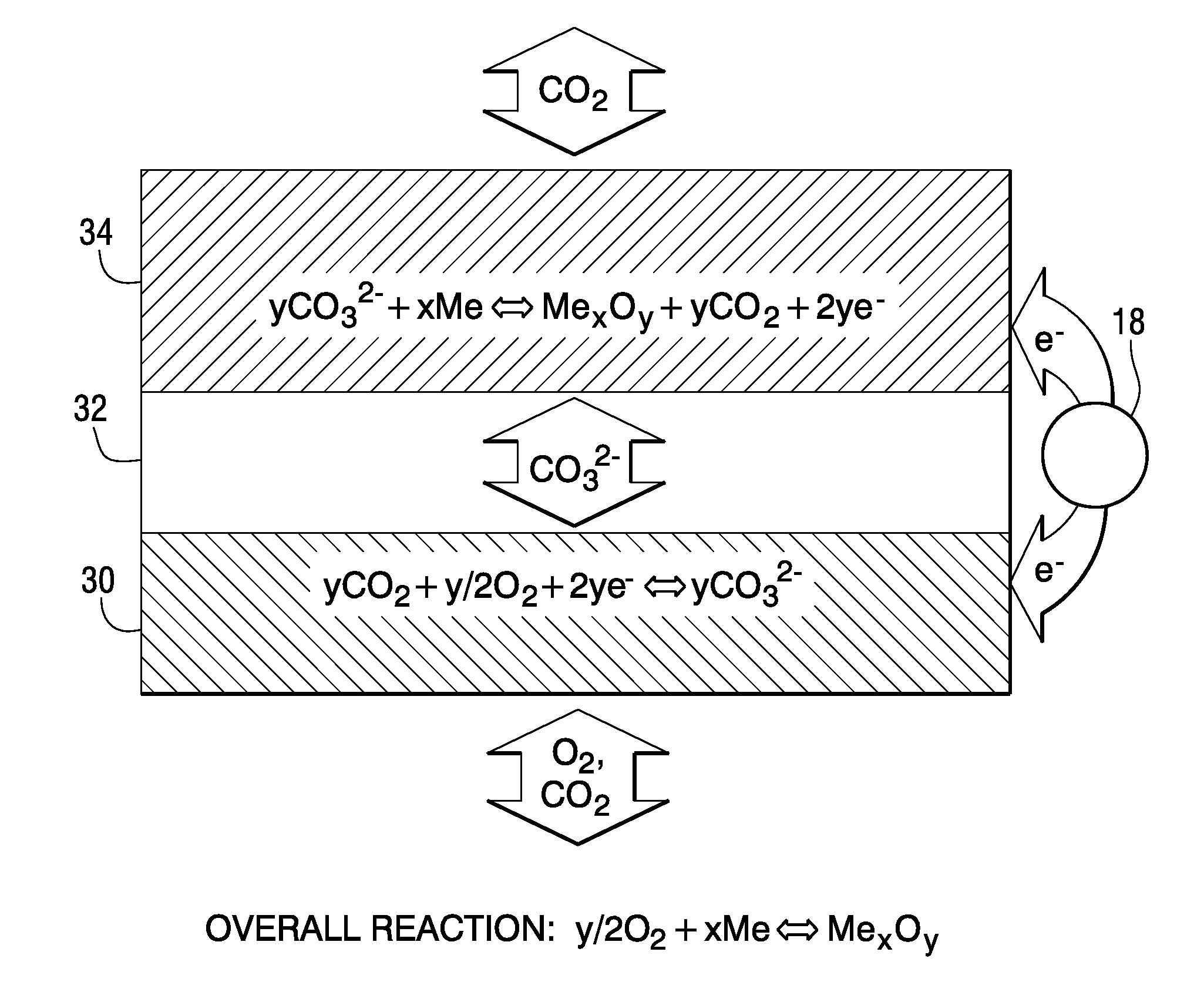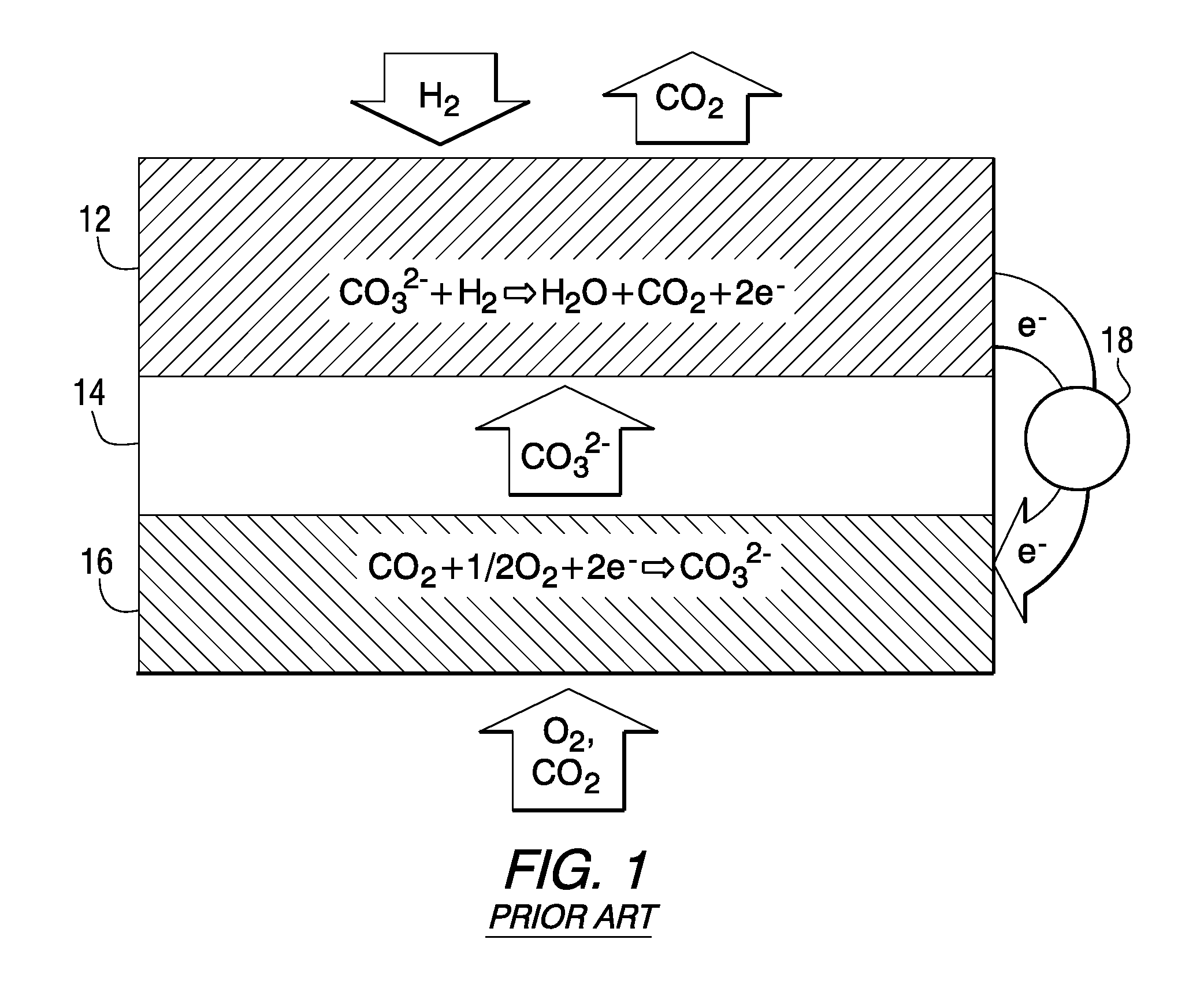Rechargeable anion battery cell using a molten salt electrolyte
a technology of anion battery cell and molten salt, which is applied in the direction of cell components, fuel and primary cells, electrochemical generators, etc., can solve the problems of inability to store energy by converting electrical energy into chemical energy, the cost of electrochemical energy storage systems is simply too high to penetrate, and the performance is required
- Summary
- Abstract
- Description
- Claims
- Application Information
AI Technical Summary
Benefits of technology
Problems solved by technology
Method used
Image
Examples
Embodiment Construction
[0016]The working principles of a rechargeable oxide-ion battery (ROB) cell are schematically shown in FIG. 2, where metal electrode (anode) 22, electrolyte 24 and air electrode (cathode) 26 are shown. In discharge mode, oxide-ion anions migrate from the high partial pressure oxygen side (air electrode 26) to the low partial pressure oxygen side (metal electrode 22) under the driving force of gradient of oxygen chemical potential. There exist two possible reaction mechanisms to oxidize the metal. One of them, as designated as Path 1, is that oxide ion can directly electrochemically oxidize metal to form a metal oxide. The other, as designated as Path 2, involves generation and consumption of gaseous phase oxygen. The oxide ion can be initially converted to gaseous oxygen molecules on the metal electrode, and then further reacted with metal via a solid-gas phase mechanism to form metal oxide. In charge mode, the oxygen species, released by reducing metal oxide to metal via electroche...
PUM
| Property | Measurement | Unit |
|---|---|---|
| melting point | aaaaa | aaaaa |
| melting point | aaaaa | aaaaa |
| temperature | aaaaa | aaaaa |
Abstract
Description
Claims
Application Information
 Login to View More
Login to View More - R&D
- Intellectual Property
- Life Sciences
- Materials
- Tech Scout
- Unparalleled Data Quality
- Higher Quality Content
- 60% Fewer Hallucinations
Browse by: Latest US Patents, China's latest patents, Technical Efficacy Thesaurus, Application Domain, Technology Topic, Popular Technical Reports.
© 2025 PatSnap. All rights reserved.Legal|Privacy policy|Modern Slavery Act Transparency Statement|Sitemap|About US| Contact US: help@patsnap.com



